Putting Communication at the heart of Humanitarian Response to the Venezuela Migration Crisis
- 28/09/2019


CDAC member, Dahlia, recently conducted a mission to understand the humanitarian communication mechanisms in the response to the Venezuelan migration crisis. This study provides a snapshot of the situation with respect to the mechanisms of communication, information, feedback, and community participation in the Venezuelan crisis, based on interviews and site observations in Colombia and Ecuador. Through this quick analysis Dahlia attempted to provide an independent perspective on the challenges related to the response to the migratory crisis in Venezuela and neighbouring countries. The team produced a short paper and video to disseminate the results of this research and support efforts placing the needs and views of affected people at the heart of the response.
The crisis, triggered by large numbers of Venezuelans leaving their country, is currently one of the most pressing in the world: the coordination platform for refugees and migrants from Venezuela (R4V) reports 4,296,000 people have left the country as of August 5, 2019. The crisis is not well characterised or understood, given that there is a lack of information regarding what is happening in Venezuela, the concrete causes of the humanitarian crisis in the country, the effects and impact on the population’s level of access to basic needs and services and the triggers of migration. The most vulnerable migrants who travel on foot through Colombia to other destinations farther from the border are called “caminantes” or walkers. Dahlia’s work seeks to gather their testimonies and give a voice to those affected by the crisis.
The importance of communication with communities (CwC), in general in the field of humanitarian aid and in particular in this type of crisis, has been recognised and constitutes an unresolved challenge. Increasingly referred to as Communication, Community Engagement and Accountability (CCEA), CwC is an emerging field with key international policies and guidelines including strong reference to this. In practice, their application in the Venezuelan migration response has been less systematic despite among other enabling factors, the lesser language barrier.
Crucial steps include developing information and awareness campaigns to disseminate relevant information and fight against xenophobia, implementing strong communication mechanisms with communities, and carrying out feedback and accountability systems. Although these are important elements of a response, those interviewed during our mission, migrants and key stakeholders, stated that the elements of communication with communities have yet to be integrated in the architecture of the humanitarian response. The response has been characterized as reactive and assistance-focused, and this seems to lead to a weaker strategic response in CwC/CCEA terms.
Stigmatisation and xenophobia are explicit concerns recognised by the aid system, it is one of the pillars in the Regional Refugee and Migrant Response Plan, and there are numerous campaigns in this regard from leading agencies and specific work in some programmes. Community-based approaches integrating host communities and migrants initiated by different agencies and NGOs have had limited results so far.
Although there is greater awareness at the global level, these initiatives have not necessarily led to change on the ground in contrast to other crises. There is an opportunity to not only listen to migrants and refugees but to also act on what we hear. A summary of the challenges includes:
- The Venezuelan migration crisis presents a challenge to the usual paradigms of humanitarian response given its regional character, the political conditions that affect it and the nature of the population on the move.
- It is necessary to strengthen communication mechanisms with communities from the moment the phenomenon occurs at origin to the places of transit and destination, with a solid strategic focus.
- The Venezuelan crisis is an opportunity to develop new and more appropriate instruments on the basis of what has been learned so far by the humanitarian community.
- The phenomenon of Venezuelan caminantes/walkers poses specific challenges in terms of communication, feedback and accountability. As the situation will continue, the duty is to provide communication and assistance mechanisms so that the migration can be done in an informed, safe and dignified manner.
- The response so far has been unanimously qualified as one of assistance and not strategic, ignoring the progressive elements that have tried to adapt humanitarian aid to a more coherent approach with the principles of CwC, accountability to affected populations and their participation.
- The imminent launch of an appeal for a humanitarian response for Venezuela, and the deployment of a decentralised humanitarian presence in Colombia, can represent a substantial change in the management of information and communication from the place of origin of the phenomenon, and contribute to a better strategy in the response. However, it will be important to establish coordination and information mechanisms between the agencies in Venezuela and those of the regional platform.




















